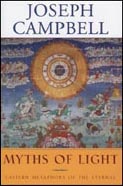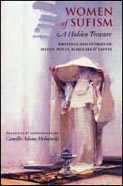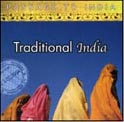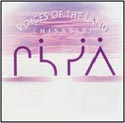Myths of Light: Eastern metaphors of the Eternal
Joseph Campbell
New World Library 2003
 Reading any of Joseph Campbell's books is a humbling experience
for me, because I am often shocked at the vastness of the things
I do not yet know. It is fortunate, then, that Campbell writes
with an easy manner, as if he were speaking directly to me across
a coffee table littered with artifacts that he happened to bring
along. His casual tone allows the esoteric subjects he explores
to become approachable and less academic. Campbell is gifted at
presenting the spiritual lessons of other cultures in a way that
Western minds can understand.
Reading any of Joseph Campbell's books is a humbling experience
for me, because I am often shocked at the vastness of the things
I do not yet know. It is fortunate, then, that Campbell writes
with an easy manner, as if he were speaking directly to me across
a coffee table littered with artifacts that he happened to bring
along. His casual tone allows the esoteric subjects he explores
to become approachable and less academic. Campbell is gifted at
presenting the spiritual lessons of other cultures in a way that
Western minds can understand.
At its core, Myths of Light is a discussion of the Eternal, the
substance within each of us that Campbell believes carries across the boundary of physical death to
live on. Campbell maintains that the stories of one culture are the stories of all cultures, and that
the purpose of myth is to instruct us in our human evolution. In this book, he explores the spiritual
mythologies of the Far East and India, carefully showing the parallels to Western concepts of God,
death and ego. Myths of Light is relevant to yoga enthusiasts, as it explores Indian mythology and
traditions that were the deep, still waters that nurtured the roots of yoga.
I most enjoyed Campbell's discussion of the Kundalini system, the
yogic tradition that visualizes the energy of the spirit as a coiled serpent at the base of the spine.
In a clear, engaging way, Campbell explains the techniques and situations that allow the passage of
the Kundalini serpent up through the seven chakras along the spine. The chakras are essentially
representations of the levels of consciousness within each human being, given corresponding points
in the physical form. Campbell notes that the first step in the serpent's progress is Hatha Yoga,
which strengthens the body and prepares it for the spirit's strenuous task of illuminating each chakra.
Given the depth of the Kundalini system, Campbell notes the irony that in North America, Hatha is
primarily taught as a type of calisthenics. In exposing the differences between East and West,
Campbell provides some of his most engaging discussion.
Many people are already familiar with Joseph Campbell.
Some of his books have topped bestseller lists, and his televised interviews with Bill Moyers
provided access to an even wider audience. Myths of Light further expands Campbell's exploration
of the stories that connect all of us together. I would recommend the book to readers who are
interested in the roots of yoga and want an overview of the sources of its tradition, written in an
engaging and entertaining way.
– Scott W. Gray
back to top
Women of Sufism, A Hidden Treasure: Writings and stories of mystic poets, scholars & saints
Camille Adams Helminski, editor
Shambhala 2003
 I am amazed at how women's spiritual lives from the past keep
resurfacing to inspire us today. In Women of Sufism, Helminski
has selected stories, dreams, prayers and visions of female saints
through the ages, from the time of the first Sufi women in the
seventh century through to the present day. The stories span the
many regions of the world where Sufism has been practised, including
Asia, Africa, the Middle East and Europe.
I am amazed at how women's spiritual lives from the past keep
resurfacing to inspire us today. In Women of Sufism, Helminski
has selected stories, dreams, prayers and visions of female saints
through the ages, from the time of the first Sufi women in the
seventh century through to the present day. The stories span the
many regions of the world where Sufism has been practised, including
Asia, Africa, the Middle East and Europe.
The mystic women documented in this anthology weave their spiritual knowledge into their family life,
their household tasks, daily actions, and even into their carpets and wall hangings. They are strong
in their devotion and let nothing deter them from their personal connection with the Beloved. The
stories give a sense of the importance and acceptance of women as teachers.
The titles of the chapters are themselves intriguing and give a glimpse of what the stories hold: A
Jewel of Knowledge, The Enraptured Ones, My Soul is a Woman, Mother Love and The Fragrance of Prayer are just a few.
The book
contains many short, penetrating stories about Rabi'a al-Adawiyya, an eighth-century mystic.
In the chapter A Doorkeeper of the Heart, one of my favourite tales illustrates how Rabi'a's saintliness
did not depend on showiness: "One day Hasan of Basra saw Rabi'a down by the riverside. He came and sat
beside her, spread his prayer-rug on the surface of the water, and said, 'Come sit with me and pray.' 'Do
you really have to sell yourself in the market of this world to the consumers of the next?' said Rabi'a.
Then she unrolled her own prayer-rug in thin air and sat on it. 'What you can do fish can do, Hasan, and
what I did any fly can do. Our real work is beyond the work of fish and flies.'"
It is clear from the care people took to write down their dreams that they were important to the Sufis as
instruments of the teachings. In this tradition, dreams are considered spiritual realities, often bearing
glad tidings and providing a route through which God can communicate with devotees. The chapter Hidden
Ways contains the dreams of at-Tirmidhi's wife, which he recorded in his autobiography. The inner link was
so strong between husband and wife that she would dream teaching dreams for him.
In another chapter, modern-day scholar Michaela Ozelsel documents her experience of a traditional solitary
retreat. Isolated in a small apartment in Istanbul with enough supplies to last forty days, she describes
how inner peace unfolded and a "polishing of the heart" occurred.
Women of Sufism is a great resource for understanding women's ongoing search for the Divine. "It is becoming
strongly clear that there will continue to be more and more stories of women of Spirit to shareas women in
the current era rediscover their rightful role as equal partners on the spiritual path as well as in the world
of daily human duties." It is very important that we open to the spiritual knowledge, intelligence and vision
of the feminine at this time in history.
– Swami Radhananda
back to top
Passage to India: Traditional India
Various artists
Navras/Qualiton 2003
| click here to listen |  |
 Traditional India is a two-CD collection of ritual, semi-classical
and folk music performed by some of South Asia's most important
musicians of the modern era. The set is one in a four-part series
called Passage to India published by Navras/Qualiton, a label
that has specialized in presenting live concert recordings of
Indian classical and traditional music. Navras searched its extensive
catalogue to choose the best for this collection.
Traditional India is a two-CD collection of ritual, semi-classical
and folk music performed by some of South Asia's most important
musicians of the modern era. The set is one in a four-part series
called Passage to India published by Navras/Qualiton, a label
that has specialized in presenting live concert recordings of
Indian classical and traditional music. Navras searched its extensive
catalogue to choose the best for this collection.
The selections chosen for Traditional India were not restricted to the country of
India, but concerned more with stylistic intent. Therefore, qawwali, Pakistan's devotional music, is well represented.
Three tracks are included from the late vocalist Nusrat Fateh Ali Khan, who was part of a 700-year lineage of qawwals.
His work alongside Western musicians introduced this beautiful form to international audiences. Based on the poetry of
Sufi mystics such as Rumi and Hafiz, and surrounded by instrumentation of harmonium, tablas and call-and-response
chanting, traditional qawwali concerts last hours as musicians and audience enter devotional states, the music being
a direct connection to the Divine.
In fact, much traditional South Asian music has a similar aim. Bhajans and ghazal singing, both featured on the CD, are devotional forms that can lull the listener into serene meditation and
inspire rapture. Listening, the mind, ear and voice are all focused on celebrating the Divine. Bhakti, or devotion,
is what persists throughout the diverse tracks on Traditional India.
When one listens to, or better put, experiences such musical forms, the usual
hectic pace of life is interrupted. Such positive diversions are welcome to anyone wanting to initiate calm into
everyday life. When these musicians ghazal vocalist Abida Perween, sarangi maestro Ustad Sultan Khan, bhajan singer
Lakshmi Shankar and London DJ/tabla player Talvin Singh, to name a few start to play, all else falls away as listener
and musician are drawn to similar mindsets.
Without the intricacies of modern studio production, the sound quality of this
collection is rough. But that only adds to its beauty and overall authenticity.
The key to successful musical evolution is awareness of what has come before.
Collections like this are essential to both preserve history and show that traditional music is alive and well.
– Derek Beres
back to top
Dreamland
Various artists
Putumayo 2003
 This recording, on the always excellent Putumayo label, is a collection
of lullabies and soothing songs from cultures around the world.
Some of the tracks are the artists' own compositions, while others
are renderings of traditional lullabies that have enchanted children
for generations. However diverse and unique these musical morsels
are, though, they contain a common thread: they invite you to
surrender to their solace.
This recording, on the always excellent Putumayo label, is a collection
of lullabies and soothing songs from cultures around the world.
Some of the tracks are the artists' own compositions, while others
are renderings of traditional lullabies that have enchanted children
for generations. However diverse and unique these musical morsels
are, though, they contain a common thread: they invite you to
surrender to their solace.
When I first heard this compilation, I admit I was a bit put off by the use of
ambient synthesized sounds on some of the tracks; the synth seemed to almost sully the purity of the traditional
songs. But after a while I was able to shut my analytical mind off and relax into the beauty of the music. What
was I thinking as I listened? The word "safety" kept floating to the front of my mind. This is not saccharine,
"let's all be happy" children's music. Rather, the songs derive their power and magic from their authenticity.
They are expressions of real feelings; of peacefulness, sometimes melancholy, and always of love for the children
they are meant to soothe to sleep.
Because all of the tracks on this CD are beautifully crafted and unique, there
is no one way to describe the type of music represented. One of my personal favourites is "Arriba del Cielo"
(Above the Sky) by Claudia Martinez, in which layers of voices sing in harmony and round, creating waves of uplifting sound. I also love the lyrics, in translation, for their quirky pragmatism: "Above the sky/they made tamales/go to sleep, my child/in my arms/I have things to do/to wash your nappies, and also to sew."
The first time I gave this CD a listen, I was wearing headphones while riding
my bike in busy traffic. Needless to say, the music was soon forgotten behind the noise and my own intense concentration.
When I gave it another chance, this time relaxing in bed, I realized that this music is not at all meant as a background
diversion. It is meant to envelop you and gently transport you to another state, to dreamland.
The selections on this recording offer up comfort in musical form. Dreamland is
a potential treasure for parents,
children and anyone who needs to relax and surrender once in a while and isn't that everyone?
– Claire Gilmore
back to top
Voices of the Land
Chisasibi
House Sound 2003
| click here to listen |  |
 Voices of the Land is a double CD chronicling the history of the
Cree community of Chisasibi, located on the east coast of James
Bay, Canada. It is a compilation of stories, traditional singing
and modern compositions performed and produced by the community
itself and arranged as a listening journey.
Voices of the Land is a double CD chronicling the history of the
Cree community of Chisasibi, located on the east coast of James
Bay, Canada. It is a compilation of stories, traditional singing
and modern compositions performed and produced by the community
itself and arranged as a listening journey.
Cree elders share their seasoned perspectives on how things once were
(for those who have forgotten or never knew), musicians young and old put their story in song and the
voice of Larry House, translating from Cree into English, threads throughout.
This community, like many other communities of original peoples, is
now remembering itself after multiple attempts by misguided colonizers to eradicate their language and
culture, and dismiss their knowledge of themselves and their land. The Chisasibi are reestablishing the
invaluable knowledge and understanding that is theirs innately. They are remembering, taking note of
damage done, healing and moving forward.
Voices of the Land teaches from a viewpoint not found in our current
history books. The Chisasibi have learned a lot about what is needed to live healthy and true lives.
What they have endured must serve as a teaching tool to prevent history from repeating itself.
The community of Chisasibi should be commended for their honest and
grassroots recording. The CD guides the listener back to how things were "before contact," then gives
voice to the impact of residential schools, relocation and drugs on their community, and finally shows
how they have re-embraced their own teachings. Although the musical pieces may not suit every listener, the message still resonates through. Voices of the Land is not a CD that I will listen to often, but it is a good source of education and inspiration and would make a great tool for teachers. It is likely that all of us have something to learn from this sound journey and we all are welcome to take it.
Voices of the Land is available through the Double Hook bookstore
at www.doublehook.com.
– Sara Torrie
back to top